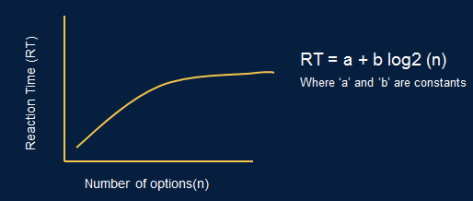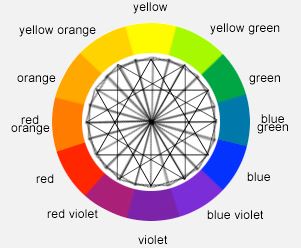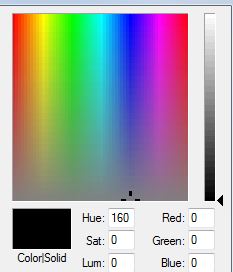In recent years User Experience(UX) Design has become very important part of software industry. As multiple softwares are providing similar service to users a good UX can mean life or death for your software product\service and in worst case your company.
Introduction
The UX design involves taking into all aspects of owning and using a software product by end users like installation, usage, updates, end of life, etc. The UX designing in recent years has become as important as designing software itself.
The UX is not just limited how the software User Interface(UI) looks, many software engineers think a good UX is delivered only through a good UI. This is the most common mistake made by engineers, when user complains software is looking outdated, hard to use and understand, engineers introduce cool colors and re-arrange UI controls or software workflow but since this is done at very end of software development life cycle making it expensive and difficult to make lot of changes.
You may wonder why UX came into picture recently in software industry. When computers where first developed it was developed by engineers and scientists to be used by themselves or by other engineers\scientists. The geeky users of computers knew how computers worked from inside and out, also hardware was very expensive so user base was smaller lot of shortcuts where taken and lot of burden laid on shoulders of these geeky users which they carried happily as it reduced there work even with complexity of using a difficult User-Machine Interface. If you see the computers used by NASA during the Apollo missions your respect for astronauts will grow multiple folds with all the complexity involved with space flight using its computer was a lot harder where they had to switch memory cards to load different programs and execute them in the right order and these programs did not even have names they had just a number which they had to recall/lookup and execute.
The UX design is a branch of study on its own, this blog highlights some important aspects of designing a good UX like Visual Perception, UX Design Principles and also simple tips on how to use colors.
L-Brain vs R-Brain
You may wonder why I am dragging brain into an UX blog, as everything that we understand and create originates in our brain as ideas and thoughts its very important to understand how it functions. As most of you know our brain is classified into two hemisphere Left(L-Brain) and Right (R-Brain). The L-Brain does all logic process, analysis and other intellectual function but it can process only in sequential order. The R-Brain does all the visual, audio, creative thinking and it can process information in parallel.
The processing done by R-Brain feels like magic to us and its difficult to train like L-Brain and measure. All our academic education is focused on L-Brain. The L-Brain is pride of an engineer. Making good UX design is considered more of an art than science, so most engineers find doing UX hard and sometimes are intimidated by an UX expert.
This blog gives you set of design principles, thumb rules and guidelines that an UX expert uses. As you read through this blog you will discover there is lot of science involved designing a good UX. Even though you may not become an expert at UX but you can follow these rules and guidelines and avoid common pitfalls which developing your software.
Our brain has neuron called mirroring neuron these neuron allows us to socialize and mirror things that we consider as good. In recent year I have noticed that newer softwares have better UX than older ones, one of the reason being when we see experience a good software product or feature we tend to mimic it. Since companies like Google, Facebook, Microsoft and Amazon invest heavily in UX to make there products better we engineers who use them have started mimicking them.
What software engineers are doing wrong?
To do the right thing and avoid common pitfalls while developing a software product and come up with a good UX, we need to understand what we are doing wrong. I am listing down most usual things that we are doing wrong:
Software products are very rude
This things is very easy to spot in most software. As soon as a softwares dependent infrastructure starts to fail or a mistake is made by user the way software handles the error speaks volumes how much taught was given on designing its behavior. As test of human character is when a person is facing the most adversity. A test of good UX is when software product has to deal with infrastructure failures and user mistakes.
The error, warning and constraint messages shown by our software are really bad many times they contain confusing and technical lingos which users do not understand. Many times we just ask users to click on OK button, when its really not ‘OK’. The messages we show hardly has information on how to recover from erroneous condition which most of the time they can by retrying certain step and most users do sometimes making matter worst in some scenarios.
Software products has very poor behavior
In UML modelling we model software with structure and behavior. So when designing a software we need to model the behavior very carefully as users tend to think software as an matured adult but in reality it behaves like an adolescent child. It forgets what we tell creates a huge mess half the time its used. I can give you many examples of software that asks you to save your work just because you opened a document and have not a done a single edit operation, this kind of behavior causes user to lose trust in the product. Many such poor behavior can be noted in your product. These days with advancements in display technology and programming language its easy to come up with a software that looks cool so I think we need to take care of behavior end of the product which requires entering into end users mind. We should keep our engineering hat aside while testing UX behaviour.
Humans do most of the work
To use a computer an end user must learn a lot of things about how it works and how different software products like OS, Browser, editors, command shell, etc can be used in combinations. He even has to have some idea about how to use the hardware like connecting a device to a computer and install drivers etc. With plug n play technology this overhead has been reduced a lot. If you observer carefully you can still see that humans do most of the heavy lifting while using a software product they need to know the dos and don’ts, rules and constraints while performing any operation many products are not intuitive by nature.
As more and more software products are being produced each year and list of things to remember on how to use them keeps growing causing users a lot of frustration and if a rival companies comes with a slightly better interaction model they will just switch over.
Ignorance about users
When a software product is being created the end users are last things in software engineers mind; engineers are more concentrating on how various software components needs to be put together to solve business problem and also dealing with various interaction problems among the components. The software engineer hardly thinks about the human machine interaction and UI is just clumsy way for user to enter data and view. This ignorance about end users becomes a big problem as solution provided may not match with what user expects he may not be able to see the data both raw and processed ones as he wants.
The engineers have limited UI controls based on software frameworks used this limits how engineers present the data to user. A rich UI may lead to complex interaction model and UI code making it difficult to maintain the UI code. The software engineer may not get this luxury of time to come up with a good UI which is closer to user expectation, this leads to compromise and degree of compromise made decide how good the UX will be. So ignoring end users may lead to death of your software product even though you have designed the internals of software well.
Conflicting interests
When a software product is being built there are multiple stakeholders involved (investors, management, support teams,development team, etc.) and not just the end users, each stakeholder have their own expectation from the product and sometimes they conflict like investor may decide that one feature or business problem is more important than other. The development team may want to use one technology to development whereas management want to use another. With tighter deadlines the development and testing team may not be able to give much attention to UX. Until recent years UX has been alien concept for many and usually not given the priority it requires. So managing these conflict in a product development cycle is very important and making sure stakeholders understand the importance of UX.
Lack of a UX design process
These days we have process for every aspect of software development from conception to deployment to post release support. The scrum process in agile methodologies is one of my favorite. The UX design also has process which can be accommodated into your existing software development process. One of the process is Goal Directed Design it provides methodologies on how to approach on UX design. A book by steve krug-Rocket Surgery made easy also gives us a good insight on how to go about UX designing. Understanding these process on how to approach on designing a good UX and blending it into existing development process is vital. Not doing these can lead to unhappy customers and unusable product.
Visual Perception
The human eye is the most important sense organ. We perceive the world around mostly through our eyes it feeds us with almost 80% of external information. For many of our day today activities eyes are very important. Naturally we decide how good or bad a software is through our eyes, that’s why a lot of attention is paid on how software looks and renders useful information to users,so they can see and process them. Even software responsiveness is even decided by our eyes. By understanding how our brain uses our eyes to process information we can provide a good UX to end users.
The Gestalt Principles
The word Gestalt means “shape” in German. In 1920s German psychologists developed a set of theories on visual perception which came to known as Gestalt principles. By understanding this principles we can develop better software that human can use as it directly connected with how we process information in our brain as seen through our eyes. Its known that human beings can process and retain structured information 40% better than unstructured information. The subsection below is dedicated to very important gestalt principles.
The Gestalt principles of Similarity
The Gestalt principle of similarity states that things which have similar visual characteristics such as shape, size, color, texture, value or orientation will be seen as belonging together.

In the image above user will assume that similar looking stars are having same meaning or importance even though its a random arrangement brain tries draw some meaning out of it. So when user sees a UI controls, text with similar fonts, size and color that look similar in your software as to be same and expects them to behave the same way, if this expectation is not met then user can get frustrated a lot. This principle states how consistent look and feel along with behavior is so important for success of your product.
The Gestalt principle of proximity
The Gestalt principle of proximity states that things which are closer together will be seen as belonging together.

In the image above even though user sees same stars since they are together he assumes there is some meaning or structure between them even if it is a collection of heterogeneous group. In software product when a user is shown with a form related things should be kept closer together making it easier for user to connect them and related operation should be kept together for example copy and paste operation must be under edit group. If your product is solving a complex business problem they should take care of proximity by represent business data or model  in well organized way that matches user expectation of that domain, any mismatch in this will lead to confusion and leading users to making mistakes making your product harder to use.
The Gestalt principles of Symmetry
The Gestalt principle of symmetry states that objects that are symmetrical with each other will be more likely to be grouped together than objects not symmetrical with each other. Basically it states that the fact that we prefer symmetric appearances over asymmetric ones, this means if you place UI controls in a symmetric arrangement user find it easy to view it and are going to like it better.

The image above illustrates symmetry we have stars presented in a uniform manner making it easy for eyes to recognize them and process. The symmetry makes it easy for the brain to see the information and it builds a high of level trust and confidence in your software.
Other Gestalt principles
In above section I have discussed the three most important principles which can apply to any software product that needs an UI. I am listing down few others which can also add to better UX but must be applied carefully and requires good judgement on how to use them.
- The Gestalt principles of Figure and Ground
- The Gestalt principles of Continuity
- The Gestalt principles of Closure
- The Gestalt principles of Law of Common Fate
I am leaving these principles in your hands for you to explore further.
UX Design Principles
The UX design principles discussed in below if followed can make your software product very user friendly to use. When developing or enhancing any part of your software product have them as a check list see if you can apply them.
The Pareto principle (80/20 Rule)
This is my favorite principle and is applicable to many other fields. The Pareto principle is named after economist Vilfredo Pareto, it specifies an unequal relationship between inputs and outputs. The principle states that 20% of the inputs is responsible for 80% of the results obtained. Putting it another way, 80% of consequences stem from 20% of the causes.
If your wondering how this principle applies to UX if you see any software product users they tend to use only 20% of features provided to them. If you cater to different groups of then there 20% set may vary. So when your developing software knowing this 20% product feature will allow you to exclusively concentrate on them and invest most of your development and testing effort on them. So whenever your asked to develop a feature think really hard, see if its really required. During software development developers, product managers and users can sometimes get carried away and think for lot of feature which are not at all used.
Consistency
This very important principle when developing your product you need to ensure you have your UI has a consistent look and feel. Ensure that similar operations are done in similar way and have consistent behavior. Make sure you have consistent error handling. Consistency is very easy to achieve but if your not paying attention to this principle then you can just as easily mess it up. A consistent behaving product is more trusted and is believed to be more reliable its just like trusting a person. Once trust is lost it can be hard to regain.
Hick’s law
Hick's Law is named after a British and an American psychologist team of William Edmund Hick and Ray Hyman. The simplest way to state Hick’s law : The time it takes for a user to make a decision is directly proportional to possible choices. The decision time increases logarithmically. The diagram below shows Hick’s law formula.

This means that we need to reduce the number of options that we show to end users, by keeping UI simple and limiting number of choices. This may not be always possible so we can reduce the user reaction time:
- By categorizing the choices user has to make.
- By obscuring complexity by hiding least used option and progressively disclosing them.
- By assisting the choice decision by making frequently used option bigger or by using different color or background. Â We can see may real world examples like in a lift the Lobby button is made larger than other floor buttons.
If you ignore this law and design complex UI layouts then only way to reduce reaction time is to train the users; like astronaut trains for a space missions.

But problem with this is if you change the UI even a little bit it can irritate users a lot and he may need to retrain himself to adopt to this change, making revolutionary changes next to impossible.
Fitts’s Law
Fitts’s law is named after researcher Paul Fitts. Its a model of speed-accuracy tradeoffs used in human–computer interaction and ergonomics, it predicts time required to acquire a target on screen as a function of the distance to the target and the size of the target. The diagram below shows Fitts law.

Basically it highlights the Importance of Size and Distance in UI Design while placing your control. The real world example of this can be seen in many places we keep the on button small and off button bigger so its easier to hit and stop a machine in case of emergency. In software if we have a email client like below:

We can predict that user will click the New button on the left more to compose a new email instead of the one on the right. The one on the right may be used but its usage will highly depend on how close mouse pointer was too it. So make sure you size your controls according to importance and also provide related options together so user can easily chose it.
Intentional Blindness
The human eye is great sensor and helps us process information at very high speeds, but it also has its limitations, even though we have a good peripheral vision we can focus and process information only at a very small portion of what we see. The area of focus is as small as 1 cent coin.  Its the processing speed of our brain that allows us to do complex activity such as driving a car around, so we need to constantly shift our focus while driving to allow us to see different moving objects on the road and judge speed and distance quickly and react to any danger.

A good UX designer can take advantage of this limitation and can change UI layouts according to options user select on one side of the screen without user eye noticing the change. The main thing to keep in mind it should not cause any flickering while changing and also should blend in with existing theme. Designers can also show complex UI on screen as long as its structured correctly user will filter the complexity out because of this natural filter.
White space
In early days of computers, programming language and hardware had limited power in terms of UI controls and their manipulation. UI controls on screens where much harder to add, remove or change than these days, this caused engineers to pack the screen with all sort of controls with all information that can be shown to user. This made the UI very difficult to use but since it could do most of the repetitive and boring work, users continued to use them.
With advance in technology both in programming language and hardware allows to change UI controls much better now, we can implement complex workflow and change UI rapidly. This lead to invent of using of white space in screen, most successful software companies use white space effectively best example is Google, the search page has lot white space but still provides all option you need to use it. So we should design UI that are uncluttered and should provide a minimum options that user needs to choose from while performing any operation. Even if your UI controls are packed they should appear well blended together instead of distinct chunks.

Using Colors
Colors are another difficult subject an UX designer has to tackle. The recommended way to use go use a Color wheel. The color wheel has these special properties:

- Diagonally opposite colors are complimentary and can be used as foreground and background colors.
- Triad colors are complimentary and can be used in combination to develop an UI screen.
- Analogous colors are groups of three colors that are next to each other on color wheel, they to are complimentary and can be used in combination to develop a screen.
- If color wheel is split vertically then side which has shades of blue are considered cool colors and opposite side is considered warmer colors. The thumb rule hear is always use a warm color on a cool color background so its clearly visible.
Now that we understand what color wheel is lets understand whats Hue, Shades and Tint are:
Hue: Hue is a basic color formed using an RGB.
Shade: Shade is process of mixing black color to the Hue.
Tint: Tint is process of mixing white color to the Hue.
We can create our own shade or tint of a Hue to create additional colors. The diagram below shows how mspaint provides this option. The slider in right controls the shade and tint property and left side color box allows us to choose a Hue.

We can develop a good Monochromatic UI screens by using just shades and tint version of a Hue. For example a company may associate its logo or website with a particular Hue color and then can use the variation of that color to design UI for its software product this will help users to strongly associate your company with its color. Companies like coco-cola are very particular about the red color of there cans, even slight variation in color is unacceptable causing a perfectly good can to be knocked of from the production line.
Its recommended to limit color to maximum of 5, most standard apps use somewhere between 3 to 5 colors unless your gaming company or a creative company which has unique user base and following using more is not advised.
Last but no least do not rely solely on colors to convey information there are color blind users and they may have hard time using your software. Also beware a color also carries implicit meaning in different cultures and demographics. Colors can also be associated with positive and negative sentiments. Using wrong color for a given audience may work against your product.
Further reading
You can further read about UX designing in below books:
- About Face 3-The Essentials of Interaction Design – Alan Cooper, Robust Reimen & David Cronin
- Design with Mind in Mind – Jeff Johnson
Google has put a lot of effort to make UI look better so we can find a lot of insight by going through Google Material Design website https://material.google.com/
For website developers and designers they can use Theme Forest website to get ready made template that have good UI design https://themeforest.net/item/avada-responsive-multipurpose-theme/2833226.


